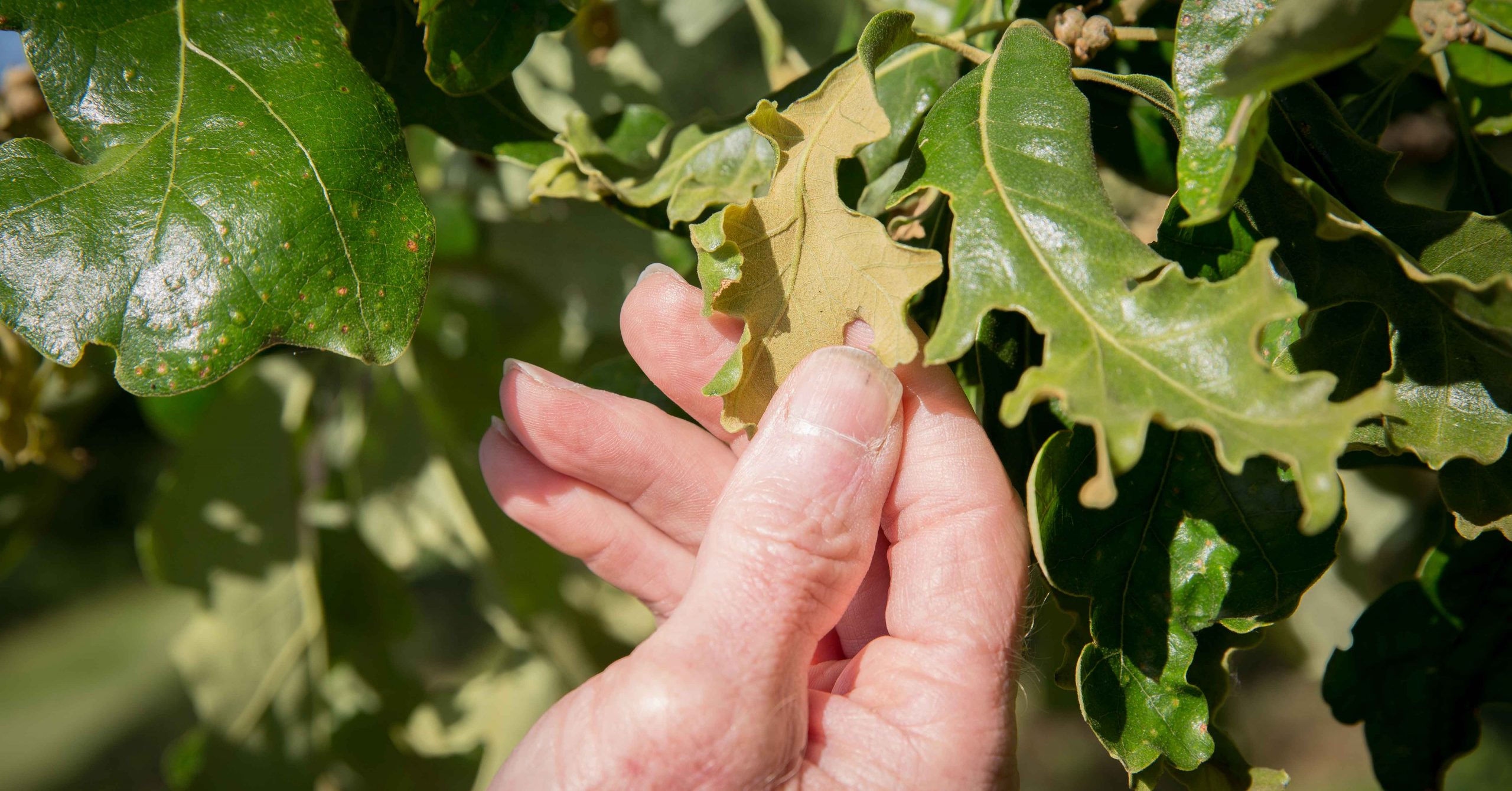By Kim Erndt-Pitcher
I LOVE spring. But summer is my absolute favorite season. Bring on the heat and humidity, the abundant insects and other wildlife, and of course the lush green vegetation! It is a time when we eat vegetables out of the garden, watch the apples and pecans grow on the trees, and pull honey from the beehives. It’s also when my family loves to go hiking in the Shawnee and paddling, fishing, and swimming at the many awesome lakes here in Southern Illinois.

But lately summer has become a stressful time for many, myself included. Living in a state that is dominated by agriculture means pesticide pollution, in particular, herbicide drift, is common. And many people are dealing with it year after year.
For the past five years, I have worked alongside some amazing people. We have spent many days in the late spring and summer monitoring for symptoms of herbicide drift in crops, trees, and native plant communities. We’ve seen symptoms in more places than we can monitor. In fact, they’ve been present at many places we visit.
Symptoms of herbicide drift are on the trees and plants along the lakes we play in; they are in our yards and gardens every year. We see them in trees while hiking, in the orchards where we pick peaches, and just driving around. It is difficult on an emotional level to witness and document herbicide injury year after year, especially at a site you’ve visited for 4+ years in a row. Tree health is declining, and some are dying. We need radical changes now.
Seeing the Signs
The signs of herbicide drift can be observed as early as the first part of May. Some trees are exposed to drift during early spring herbicide applications. This timing often coincides with the sensitive stages of bud swell and leaf emergence in many trees. And now, with the increased use of herbicide tolerant crops which allow for the use of herbicides over the top of growing crops, we also see symptoms show up throughout much of the growing season.

When you visit an area and see folded, curled, and cupped leaves on a redbud, and then notice all the redbuds look the same… and that sycamore, and those white oaks, and even the herbaceous plants… you begin to ask questions. What does this mean for the long term health of these plants? How does this impact invertebrates and birds? What about our children who play here? We don’t have answers to most of these questions, and that only adds to the stress for so many people.
Herbicides sprayed onto crops don’t just drift onto neighboring farmland, they can travel long distances, move onto your property from your neighbor’s lawn, and run off fields and lawns during rains to contaminate our streams and drinking water. They can volatilize, leave their intended target, and land where they harm wild plants, insects and other animals, and directly and indirectly harm the people of Illinois.
A Need for Radical Change
Our lawmakers and state regulatory agencies are not taking the actions necessary to better regulate and enforce the Illinois Pesticide Act. The people of Illinois and our environment are paying the cost. Landowners are paying the cost—financially, emotionally, and mentally.
We’ve heard from people all over the state who have been impacted by pesticide drift. At PRN we are working to improve the rules that govern use of the most harmful pesticides. Through our Tree and Plant Health Monitoring Program, we’ve documented symptoms of injury on nature preserves, state lands, private gardens, orchards, and specialty crops. But much more needs to be done.
Over the coming year, we will expand our tissue sampling and monitoring efforts, we will reach more decision makers, and we will work harder to build awareness on this issue that ultimately touches all of us.







